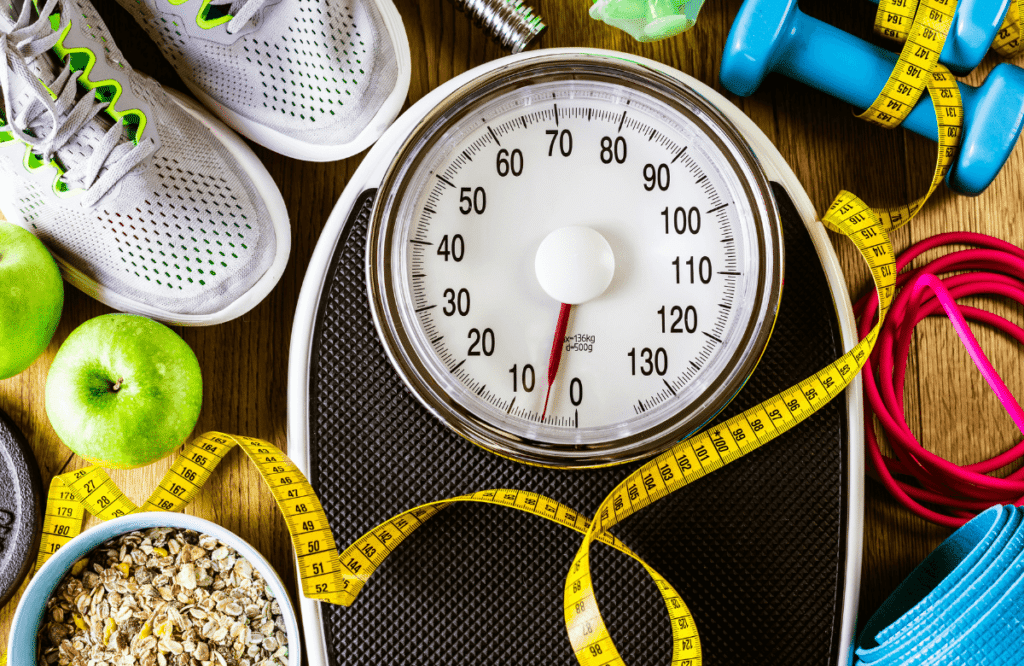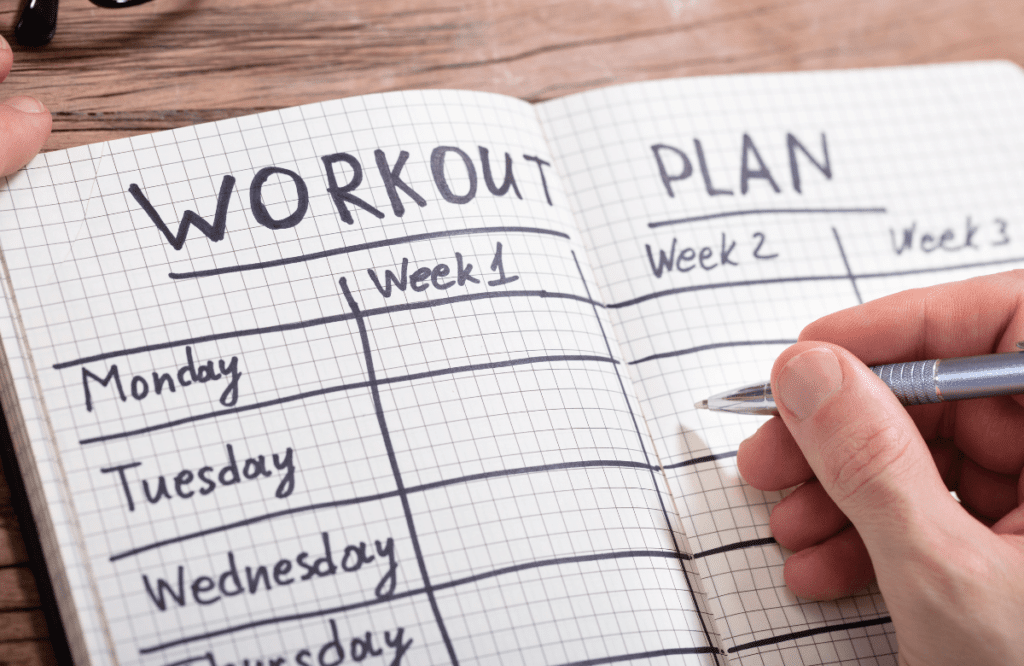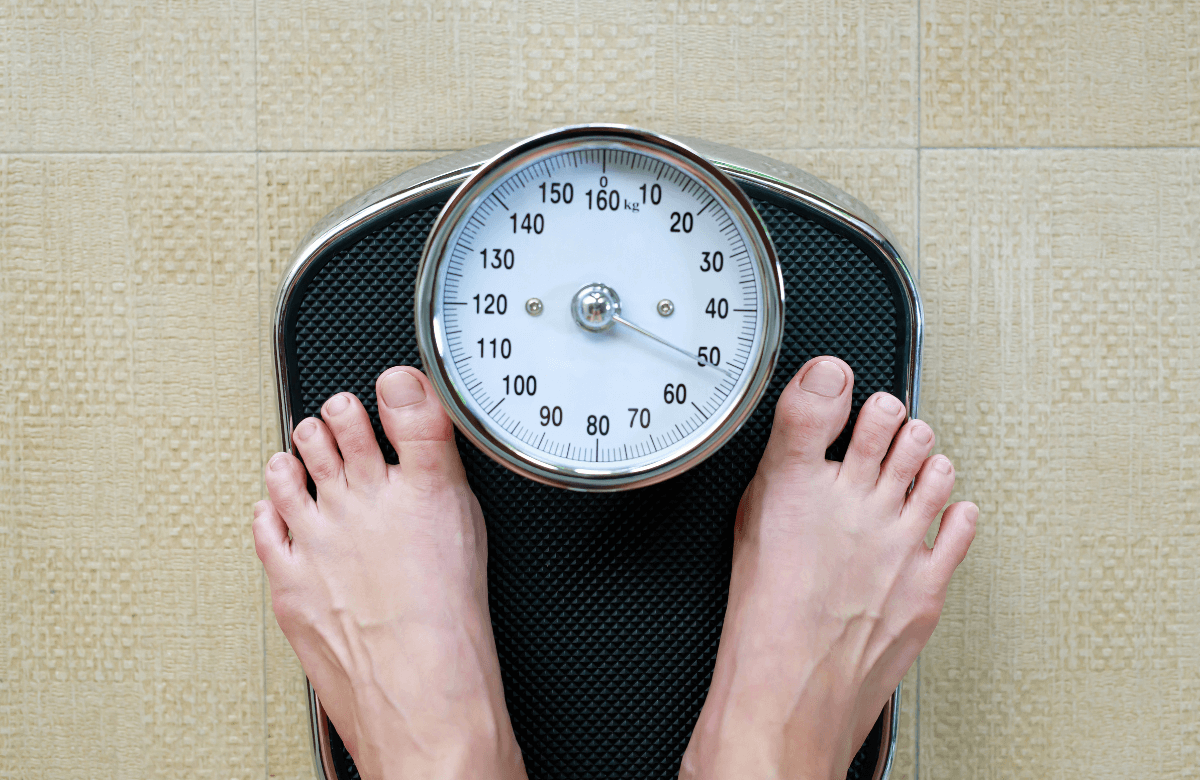Everyone wants to get big muscles. But getting stronger and building muscle mass typically comes with a bit of fat gain. So, how do you get shredded after a difficult bulking phase?
In this article, we’ll cover how to cut weight after bulking, calculate calories, and how to maintain muscle mass.
Jump to:
What Is Cutting Weight?
Professional athletes, bodybuilders, and fitness enthusiasts use bulking and cutting cycles to build muscle mass and shed body fat.
The bulking phase involves consuming a caloric surplus—eating more calories than your body burns. Muscle growth requires ample calories, but the bulking process also leads to fat gain, regardless if you’re on a clean or dirty bulk.
That’s where the cutting phase comes into play.
The cutting phase focuses on losing body fat while minimizing muscle loss. This is achieved through a caloric deficit—eating fewer calories than the body burns, resulting in weight loss.
Anyone can perform a bulk or cut, but the cutting phase can lead to muscle loss and metabolic issues when done incorrectly.
Understanding a Calorie Deficit
So, what exactly is a caloric deficit?
Simply put, a calorie deficit occurs when an individual consumes fewer calories than their body burns, resulting in weight loss.
Calorie deficits are a crucial component of the cutting phase and can be achieved by reducing caloric intake, increasing activity levels, or a combination. When the body is in a calorie deficit, it’s forced to use stored fat as fuel, resulting in weight loss.
But losing weight isn’t as simple as simply reducing your food intake and cutting out your favorite foods.
If you don’t optimize your diet plan for the right amount of proteins, carbohydrates, and fats, you run the risk of losing muscle gains made during the bulk phase.
Duration of the Cutting Phase
Now you might wonder, how long should my cut last?
The duration of your cutting phase will depend on your fitness goals and circumstances. If you’re preparing for a competition, you might have less time than someone looking to get lean for the summer.
That said, it’s essential to practice safe and effective methods.
A cutting phase should last around 8–16 weeks. Again, this will depend on your goals and calorie restriction. If you need to lose 15 pounds to hit your bodyweight goals and you’re losing one pound per week, you might have a 15-week cut.
Knowing your calorie restriction and goal body weight can help you plan accordingly.

How to Calculate Your Weight Cut
Before you dive into counting calories and creating a cutting diet, it’s essential to calculate how much weight needs to be lost to achieve your desired weight.
This process involves calculating the number of calories needed to maintain your current weight and then creating a calorie deficit to lose weight.
Calculating Your Total Daily Energy Expenditure (TDEE)
The first step in creating a calorie deficit is to determine how many calories your body burns each day, also known as the total daily energy expenditure (TDEE).
The TDEE is also sometimes referred to as maintenance calories.
Your TDEE is influenced by various factors like age, gender, weight, height, and activity level.
The TDEE can be calculated using various formulas, such as the Harris-Benedict equation or the Mifflin-St Jeor equation. These formulas take into account factors such as age, gender, weight, height, and activity level.
You can use several online calculators to give you a good idea of your TDEE, like the TDEE Calculator.
Calculating a Calorie Deficit
Once you calculate your TDEE, you can create a caloric deficit by reducing your calorie intake.
How much you reduce your daily calories will affect how much weight you lose each week and the timeframe to hit your fitness goals. Generally speaking, a calorie restriction of 500-1000 is considered safe and sustainable.
Most people choose to reduce their daily caloric intake by 10–20%. For example, if your TDEE is 2,500 calories, you may reduce it by 200-500 calories per day.
The right calorie reduction will depend on your fitness goals, timeframe, and commitment. You may opt for a faster cut if you have a competition or time-specific plan.

Calculating Macronutrients
The calories are only one part of the equation. You’ll also need to determine your macronutrients, like protein, carbohydrates, and fat. Macronutrients play a crucial role in weight loss and overall health, and ensuring the right balance of macronutrients can help maximize weight loss while preserving muscle mass.
Calculating your macronutrients is a relatively simple task, but you’ll need to understand the basics. First, let’s cover how many calories are in each gram of protein, carbs, and fat:
- 1 gram of protein = 4 calories.
- 1 gram of carbohydrates = 4 calories.
- 1 gram of fat = 9 calories.
Now, let’s use an imaginary individual to help you understand the calculations.
Example Macronutrient Calculation
So, let’s say a 165 lb individual is consuming 2,010 calories per day to lose 1 lb of fat per week.
How would they know how much protein, fat, and carbs to consume? Calculating the amount of protein and fat is based on body weight:
- Protein intake: 1-1.5 grams of protein per pound of body weight. (165-247 grams)
- Fat intake: 0.3 grams of fat per pound of body weight. (50 grams)
Wait, that’s only protein and fat; how many carbs would the person need? To calculate the grams of carbs, you would multiply the protein and fat by their respective calories:
- 165 grams of protein x 4 calories per gram = 660 calories
- 50 grams of fat x 9 calories per gram = 450 calories
Now, add the two numbers together:
- 450 + 660 = 1,110 calories
Next, subtract the number from the total number of calories each day:
- 1,100 – 2,000 = 900 calories
So, now we have the remaining daily calorie intake. All we have to do is divide the number by 4, the number of calories per gram of carbs:
- 900 ÷ 4 = 225 grams of carbs.
For this individual, they would consume the following macronutrients each day:
- 165 grams of protein
- 50 grams of fat
- 225 grams of carbs
Hopefully, you can take these calculations to determine the amount of macronutrients you need for an effective cut. You can also use online macronutrient calculators for easier results.

How to Exercise on a Caloric Deficit
Now that you understand the basics of a caloric deficit, how should you adjust your workout routine?
First, it’s essential to continue strength training. If you forgo weight training, you’re likely to lose muscle gains made during the bulking phase. Muscles require weight training to retain muscle mass, even during periods of calorie restrictions.
But let’s face it; your energy levels won’t be the same while cutting. So, what should you do?
Keep Weight Training
You may be tempted to adjust to lightweight isolation exercises during the cutting phase. This is a mistake.
Instead, you should continue lifting heavy weights. Muscles require a challenge to maintain muscle mass. That doesn’t mean you can’t make any adjustments.
You may want to adjust your program to do 80-90% of your max training volume.
For example, if you were squatting 300 lbs, you may reduce the weight to 240–270 lbs. This way, you’re still challenging the muscles without completely burning out.
You can also switch to variations of specific exercises. For instance, you may include Romanian deadlifts in favor of conventional deadlifts. This way, you’re engaging different muscles at different rates to reduce fatigue.
What About Cardio?
Besides weight training, what about cardio?
Cardio workouts are essential for a number of reasons, like burning calories, improving cardiovascular health, and overall well-being. But, too much cardio during the cutting phase can negatively impact your results.
Too much cardio can cause you to enter a catabolic state, losing fat and muscle mass.
Obviously, losing muscle mass is not ideal after a bulking phase. Instead, it’s essential to focus on the type of cardio you engage in and the frequency.
Low-intensity cardio workouts, like walking, uphill walking, swimming, or cycling, are fantastic options. It’s best to engage in these workouts for no more than an hour to avoid losing muscle mass.
You may want to add 1–3 cardio workouts into your weekly training regimen. Always listen to your body and avoid overexercising. Going too hard can lead to burnout, fatigue, injury, and loss of muscle mass.
Steps for an Effective Cut
Now that you have a comprehensive understanding of the basics, let’s lay out the steps for a practical cutting phase.
Track Your Calories and Macros
The first step is to determine your total daily energy expenditure (TDEE) and adjust your calorie intake to suit your weight loss goals. Afterward, it’s essential to calculate your macronutrients so you’re eating enough protein, carbohydrates, and fats.
Eat Enough Protein
After you calculate your calorie intake and macronutrients, it’s time to eat enough protein.
Protein is essential for building and maintaining muscle mass, especially during a weight cut. You may want simple ways to get enough protein, like powders, shakes, and bars. Otherwise, lean meats, like chicken and fish, can go a long way.
Keep Training
Weight training is essential to maintaining the strength gains you made during the bulking phase. You may have less energy to lift heavy weights, so making adjustments to your training protocol might be necessary.

That said, don’t switch to light weights or isolation exercises. Keep your routine similar to your bulking phase, maybe completing 80–90% of your max lifts. This will keep your muscles challenged and ensure minimal strength loss during your cut.
Don’t Go Overboard On Cardio
Lastly, do not go overboard on cardio workouts. Cardio workouts can be a fantastic way to improve your overall health and burn extra calories. But too much cardio training can cause you to lose muscle mass.
Instead, prioritize low-impact exercises like walking, hiking, uphill climbs, swimming, and cycling.
Another way to get extra cardio into your workout regimen is to move around more in your daily life. Things like parking far away at the grocery store, walking to work, or even purchasing a standing desk can go a long way.
Frequently Asked Questions (FAQ)
How Long Does It Take To Cut After Bulking?
The duration of the cutting phase will vary, but it typically takes 8–16 weeks. This will depend on your weight loss goals, calorie restriction, and circumstances. Lower timeframes may result in less effective results, while more extended time frames can be hard on the body.
Will I Lose Muscle While Cutting?
A little muscle loss is expected during the cutting phase. That said, eating enough protein, continuing weight training, low-intensity cardio, and adequate rest will help you maintain strength.















